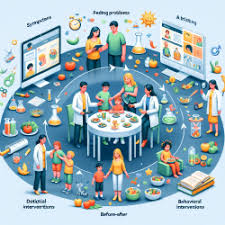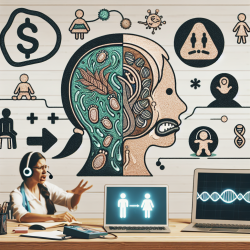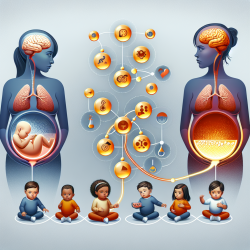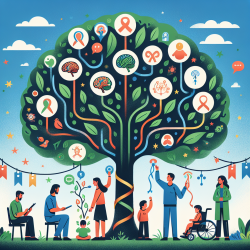Introduction
In the realm of child development, creating positive outcomes for young adolescents is a goal shared by educators, therapists, and parents alike. A recent study titled "The Efficacy of Two Group Interventions on Mental Representations, Attachment Security, and Trauma Symptoms in Ethnically and Socioeconomically Minoritized Young Adolescents in an Urban Middle School" sheds light on effective strategies to enhance mental health and socioemotional well-being in this demographic. This blog will delve into the findings and implications of this research, offering insights for practitioners seeking to implement data-driven interventions.
The Power of Group Interventions
The study explored the efficacy of two distinct group interventions: Storytelling/Story-Acting for Adolescents (STSA-A) and Mentalization-Based Treatment Group Intervention (MBT-G). Conducted over eight months, these interventions demonstrated significant improvements in attachment security and reductions in trauma symptoms among participants.
Both interventions were implemented in an urban middle school setting, focusing on ethnically and socioeconomically minoritized adolescents. The results revealed that both STSA-A and MBT-G are effective in fostering positive mental representations and enhancing attachment security, ultimately leading to a decrease in trauma-related symptoms.
Key Findings and Implications
- Attachment Security: Participants in both interventions showed increased attachment security, which is crucial for developing healthy relationships and emotional resilience.
- Reduction in Trauma Symptoms: Significant decreases in trauma symptoms were observed, highlighting the potential of these interventions as preventive measures.
- Gender Differences: The study noted variations in outcomes based on gender, suggesting the need for tailored approaches in intervention design.
- De-idealization of Parental Figures: The interventions facilitated a more realistic understanding of parental figures, contributing to improved attachment security.
Recommendations for Practitioners
For practitioners, the findings underscore the importance of incorporating group interventions into school-based mental health programs. The data suggests that even adolescents not previously identified with socioemotional difficulties can benefit from these interventions, making them valuable as primary prevention strategies.
Practitioners are encouraged to consider the specific needs of their student populations when choosing between STSA-A and MBT-G. While both interventions are effective, STSA-A may be particularly beneficial for adolescents who require more creative and narrative-based approaches, whereas MBT-G might be more suited for those needing to enhance their mentalization skills.
Conclusion
The study provides compelling evidence for the efficacy of group interventions in improving attachment security and reducing trauma symptoms in young adolescents. By adopting these data-driven approaches, practitioners can contribute to the creation of supportive environments that foster emotional growth and resilience.
To read the original research paper, please follow this link: The Efficacy of Two Group Interventions on Mental Representations, Attachment Security, and Trauma Symptoms in Ethnically and Socioeconomically Minoritized Young Adolescents in an Urban Middle School.










